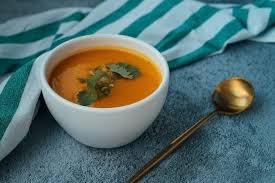Recovering from a dental procedure can be challenging, especially when it comes to eating. That’s why soft food recipes after dental surgery are essential for maintaining nutrition while ensuring comfort and promoting healing. During the postoperative period, it’s crucial to avoid hard, chewy, or spicy foods that can irritate wounds or interfere with stitches. Choosing the right meals makes all the difference, and with the right ingredients and preparation, these soft meals can still be incredibly flavorful and satisfying.
The journey to recovery often begins with managing pain and swelling, and that starts with what you eat. Soft food recipes after dental surgery aren’t just about being easy to chew; they’re also designed to be nourishing, easy to digest, and gentle on sensitive areas. From creamy soups to smoothies and mashed vegetables to soft scrambled eggs, the variety of options available ensures that you don’t have to sacrifice taste or nutrition.
When selecting soft food recipes after dental surgery, it’s best to focus on foods that require little to no chewing. Avoiding crunchy snacks, tough meats, or foods with seeds or hard edges is vital. Instead, gravitate toward naturally soft textures and meals that can be pureed or mashed to a smooth consistency. The right temperature also matters; lukewarm or slightly chilled foods can soothe sore areas, while hot meals might increase discomfort or risk of irritation.

The Importance of Soft Food Recipes After Dental Surgery
The healing process after dental surgery is delicate. Whether it’s a wisdom tooth extraction, gum surgery, or implant procedure, the mouth needs time to recover. That’s why soft food recipes after dental surgery play such a vital role. Consuming soft foods helps reduce the risk of complications like dry sockets or infection. Moreover, these recipes ensure the body gets enough nutrients to support tissue repair, manage inflammation, and prevent fatigue.
Hydration is another critical component of healing, and many soft food recipes after dental surgery incorporate water-rich ingredients like fruits, vegetables, and broth-based soups. These help keep the body hydrated and also assist in flushing out toxins, further enhancing recovery. In addition to physical benefits, sticking to appropriate foods can significantly boost morale, especially when taste and variety are preserved.
Eating becomes a nurturing act during recovery, and soft food recipes after dental surgery provide the perfect opportunity to explore comforting meals. Think of warm oatmeal, soft steamed fish, mashed potatoes, creamy yogurts, and nutritious smoothies. These foods not only support your healing journey but also provide a sense of normalcy and pleasure during a potentially uncomfortable time.
What to Avoid While Embracing Soft Food After Dental Surgery
While you’re focused on finding the best soft food recipes after dental surgery, it’s equally important to understand which foods to avoid. Crunchy items like chips, raw vegetables, or nuts can irritate or become lodged in surgical sites. Similarly, acidic foods such as citrus fruits and tomatoes might sting open wounds, causing unnecessary discomfort. Spicy meals can also trigger inflammation or interfere with the healing process.
Also, it’s best to steer clear of foods with small seeds or grains that might sneak into incision areas—poppy seeds, sesame, and certain whole grains are common culprits. Carbonated drinks should be limited or eliminated since the bubbles can aggravate sensitive tissue. Instead, opt for soothing teas or flat water-based beverages that align with your selected soft food recipes after dental surgery.
Another major consideration is temperature. Extremely hot foods may burn or irritate your healing gums. Chilled options are generally more comfortable and can help reduce inflammation, which is why many people rely on cold, soft food recipes after dental surgery, like smoothies or yogurt parfaits.

Soft Food Recipes for Breakfast
Mornings after surgery can be tough, but breakfast doesn’t have to be skipped. Some of the best soft food recipes after dental surgery are perfect for breakfast and provide energy to start your day. Smoothies made from bananas, berries, Greek yogurt, and almond milk are a go-to choice. They are packed with protein and vitamins, and their smooth consistency makes them ideal for sore mouths.
Scrambled eggs are another fantastic option. They are soft, easy to chew, and rich in protein and healthy fats. You can customize them with a bit of soft cheese or avocado for added nutrients. Cream of wheat or oatmeal prepared with milk or a milk alternative is another excellent addition to your collection of soft food recipes after dental surgery. These warm, comforting bowls can be flavored with mashed banana, cinnamon, or honey for a more enjoyable meal.
Even smoothies can be altered in numerous ways to create variety. Adding soft fruits, protein powder, or a spoonful of peanut butter helps change the taste and increase nutrition without altering the soft consistency you need. These breakfast options make it easy to stick to soft food recipes after dental surgery without feeling like you’re missing out.
Soft Food Recipes for Lunch
As midday arrives, it’s important to maintain energy levels and promote recovery with satisfying meals. Soft food recipes after dental surgery for lunch can be both filling and nutritious. Think of meals that are warm, rich in protein, and easy to digest. When crafting lunch menus during recovery, it’s all about variety and comfort. Here are a few standout soft food options that are easy on the gums and pleasing to the taste buds:
-
Mashed potatoes with gravy: Creamy and smooth, mashed potatoes are a classic in any list of soft food recipes after dental surgery. Add unsalted butter and bone broth-based gravy for extra flavor.
-
Creamy vegetable soups: Blended carrot soup, butternut squash soup, or potato leek soup are excellent choices. These soups are full of vitamins, easy to consume, and gentle on healing tissue.
-
Soft-cooked pasta with cheese sauce: Macaroni or small shell pasta cooked until very soft and topped with a mild cheese sauce can make a comforting lunch. Choose cheese that melts easily and avoid hard shreds.
-
Steamed flaky fish: Fish like tilapia or cod can be gently steamed until soft and served with a smooth puree like mashed peas or pumpkin. This is protein-rich and suitable for those needing variety in their soft food recipes after dental surgery.
-
Avocado mash with soft-boiled eggs: Avocados are creamy and loaded with healthy fats, making them perfect for spreading or mashing. Combine them with a soft egg for a fulfilling and healing lunch.
Soft Food Recipes for Dinner
Dinner should be comforting, nourishing, and ideally easy to prepare—especially when you’re recovering. Soft food recipes after dental surgery for dinner offer a way to end the day with warmth and nutrition. You don’t need to sacrifice satisfaction or flavor. Think protein-packed meals and creamy textures to support your body’s repair process overnight.
-
Well-cooked risotto: Arborio rice cooked slowly with soft mushrooms, cheese, and broth makes a great dinner dish that’s rich and soft enough for sensitive mouths.
-
Polenta with soft cheese: Smooth, creamy polenta topped with ricotta or mascarpone cheese delivers both comfort and ease of digestion. You can even add a bit of finely pureed vegetable or soft pumpkin for more nutrition.
-
Lentil mash with pureed carrots: Cook lentils until very soft and blend lightly with olive oil for a protein-rich dinner. Serve with carrot puree on the side for a meal that’s part of any great soft food recipe plan after dental surgery.
-
Egg custard or soft tofu dishes: Mildly seasoned soft tofu or egg custard is rich in protein, incredibly soft, and ideal for those with mouth sensitivity.
-
Shepherd’s pie with creamy topping: If ground meat is very finely minced and well-cooked, a soft shepherd’s pie topped with whipped potatoes can be a hearty dinner that fits into soft food recipes after dental surgery.

Soft Food Recipes for Dessert
Just because you’re healing doesn’t mean you have to skip dessert. Soft food recipes after dental surgery can include sweet treats that are gentle, soothing, and satisfying. Focus on options that are smooth in texture, not too sugary, and ideally provide some nutritional benefit.
-
Greek yogurt with mashed banana: Creamy and full of probiotics, yogurt supports gut health while the banana adds natural sweetness and potassium.
-
Fruit puree or applesauce: Homemade purees made from soft-cooked pears, apples, or peaches offer a sweet end to a meal without causing discomfort.
-
Rice pudding: Made with soft, overcooked rice and milk, rice pudding is an excellent dessert that’s both filling and easy to swallow.
-
Smoothies with frozen fruit: Blending frozen berries with yogurt or almond milk can create a rich, spoonable dessert that cools and soothes.
-
Soft puddings or custards: Chocolate pudding, vanilla custard, or even silken tofu puddings can serve as a delightful way to enjoy dessert without stressing healing gums.
Soft Food Recipes for Snacks
Snacks help keep energy levels steady throughout the day. During the healing period, smart snacking becomes a key part of your dietary strategy. Soft food recipes after dental surgery for snacks should be light, easy to chew, and spaced out between larger meals to keep hunger at bay and support your overall recovery.
-
Hummus with soft pita: While regular pita might be too firm, steamed or microwaved pita becomes softer and, when paired with hummus, offers a protein-packed snack.
-
Cottage cheese with mashed fruits: High in protein and very soft in texture, cottage cheese pairs wonderfully with mashed strawberries or peaches.
-
Nut butter spoon: A smooth spoonful of peanut or almond butter can provide a quick protein boost, just make sure it’s natural and not overly sticky.
-
Boiled eggs mashed with yogurt: A creamy combo of mashed egg yolk and plain yogurt creates a surprisingly tasty and satisfying soft snack.
-
Smoothie bowls: Thicker than your standard smoothie, these are spoonable and can include soft additions like mashed berries or even a bit of oatmeal for a filling snack.
What soup is good after dental surgery?
After dental surgery (such as wisdom tooth removal, extractions, or implants), it’s important to choose soups that are:
-
Soft and smooth (no chunks or hard bits)
-
Warm, not hot (to avoid irritating the wound)
-
Nutrient-rich (to promote healing)
-
Low in acidity and spice (to avoid stinging or discomfort)
Best Soups After Dental Surgery
-
Bone Broth
-
Very soothing and rich in nutrients like collagen and amino acids.
-
Thin and easy to sip without chewing.
-
-
Cream of Chicken or Turkey Soup
-
Blended until smooth—provides protein to aid recovery.
-
Avoid adding rice or chunky vegetables initially.
-
-
Butternut Squash Soup
-
Naturally creamy and smooth.
-
Rich in vitamins A and C, which help with healing.
-
-
Tomato Soup (mild version)
-
Can be okay if it’s not too acidic or spicy.
-
Add a bit of cream or milk to reduce acidity.
-
-
Cream of Mushroom Soup
-
Smooth and flavorful.
-
Can be strained or blended for extra smoothness.
-
-
Lentil or Split Pea Soup (blended)
-
Great plant-based protein.
-
Blend well to remove any tough textures.
-
Avoid:
-
Hot soups (let them cool to warm temperature)
-
Soups with chunks of meat, vegetables, or rice
-
Spicy or acidic soups (they can irritate the surgical site)
-
Soups with seeds or small grains (they can get stuck in surgical wounds)
Meal Prep Tips for Soft Food Recipes
Planning can make your recovery smoother. One of the best ways to ensure you stick to appropriate soft food recipes after dental surgery is to have meals ready and available when you’re not feeling your best. Proper meal prep helps you avoid reaching for the wrong foods and reduces the stress of cooking when you’re sore or tired. It also ensures you get the nutrients you need without putting your healing at risk.
-
Cook in batches: Prepare large portions of soft food recipes after dental surgery like mashed potatoes, blended soups, or pureed vegetables, and store them in single-serve containers.
-
Use freezable options: Many soft food recipes after dental surgery freeze well, such as lentil mash, rice pudding, or blended veggie sauces. Label and store them for easy reheating.
-
Smoothie prep bags: Freeze peeled and chopped fruits in zip bags to toss into a blender later. This makes preparing soft food recipes after dental surgery quick and easy, especially for breakfast or snacks.
-
Invest in a good blender or food processor: A high-powered blender ensures your soft food recipes after dental surgery are smooth, lump-free, and pleasant to eat.
-
Create variety in texture and flavor: Even within the limits of soft food recipes after dental surgery, try rotating between creamy, pureed, fluffy, and gelatinous textures to keep your meals enjoyable.
Consistency in eating soft food recipes after dental surgery also means adapting to temporary physical changes. You might find your jaw movement limited or feel discomfort when opening wide. So having meals that don’t require a lot of effort to consume is vital. Pre-sliced, softened, or pre-blended meals can help tremendously.
Managing Nutritional Balance
Sticking to soft textures doesn’t mean compromising on nutrition. A wide range of soft food recipes after dental surgery can cover all your macronutrient needs—proteins, fats, and carbohydrates—as well as essential vitamins and minerals. Balanced soft meals are vital for cell repair, reducing inflammation, and regaining strength.
-
Protein sources: Include mashed legumes, scrambled eggs, silken tofu, and Greek yogurt. Protein is crucial for tissue healing and immune support.
-
Healthy fats: Avocados, soft cheeses, and olive oil drizzles add creaminess and help absorption of fat-soluble vitamins in your soft food recipes after dental surgery.
-
Fiber and antioxidants: Use blended fruits and steamed, pureed vegetables like carrots, zucchini, and spinach in smoothies or soups to promote gut health and reduce inflammation.
-
Hydration-rich options: Incorporate water-dense foods like watermelon puree, cucumber smoothies, and broth-based soups to stay hydrated and support healing.
-
Iron and calcium: Soft meats, eggs, and dairy-based recipes are great sources of these essential minerals needed during the recovery phase.

Rotating Soft Food Recipes to Prevent Boredom
Eating soft food can get repetitive if you’re not careful. However, one of the keys to sticking with soft food recipes after dental surgery is to prevent food fatigue. You don’t have to eat the same mashed potatoes every night. With a little creativity, you can keep your meals exciting even while following all the guidelines for safe recovery.
-
Switch up seasonings: Within safe limits (avoiding spices that might irritate wounds), you can use herbs like basil, parsley, or rosemary to bring new life to your soft food recipes after dental surgery.
-
Change cooking methods: A steamed carrot mash tastes different than roasted and pureed carrots—even though both are soft food recipes after dental surgery. Roasting before pureeing can add sweetness and complexity.
-
Play with temperatures: A warm vegetable soup and a cold fruit smoothie offer very different experiences while still fitting within the soft food recipe guidelines for post-dental surgery recovery.
-
Use global influences: Think miso soup, egg drop soup, soft polenta, congee, or dal. These international dishes are often naturally soft and easy to digest, making them perfect soft food recipes after dental surgery.
-
Pair soft foods creatively: Mashed avocado with cottage cheese, or yogurt with pureed sweet potato, are combinations that blend texture and taste without compromising comfort.
Long-Term Healing and Transitioning from Soft Food Recipes
As healing progresses, your dentist or oral surgeon will give you the green light to reintroduce more textures. However, it’s essential to transition slowly and continue incorporating elements of soft food recipes after dental surgery until your mouth fully heals. The temptation to rush back to crunchy or chewy favorites can lead to injury or complications.
-
Begin by adding slightly firmer versions of soft foods—like fork-tender steamed vegetables or soft fruits such as ripe melon or mango.
-
Continue to monitor sensitivity and avoid foods that require heavy chewing until your oral health professional confirms it’s safe.
-
Maintain hydration and nutrition even as you move beyond the most restrictive stage. Incorporate parts of your favorite soft food recipes after dental surgery as supportive side dishes while your body adjusts.
You might even find that some of your soft food recipes after dental surgery become long-term favorites. Many are inherently nutritious and can become part of a balanced diet long after you’ve fully recovered. Creamy vegetable soups, protein-rich smoothies, and soft scrambled eggs are delicious and beneficial even outside a post-surgery context.
Conclusion
Navigating the healing process after dental procedures can feel overwhelming, but the right diet can significantly ease your journey. Embracing a wide variety of soft food recipes after dental surgery ensures you’re not only protecting sensitive areas but also giving your body the nutritional tools it needs to recover effectively.
Throughout this guide, we’ve explored soft food recipes after dental surgery for every meal—from energizing breakfasts and soothing lunches to hearty dinners, indulgent desserts, and gentle snacks. We’ve highlighted recipes rich in proteins, vitamins, minerals, and healthy fats—all delivered in textures that reduce strain and promote healing. Each idea has been curated to fit seamlessly into your recovery plan without sacrificing flavor or enjoyment.
Meal preparation, ingredient variety, and thoughtful rotation help make soft food recipes after dental surgery enjoyable rather than restrictive. With the right planning and a bit of creativity, you can prevent food fatigue and stay consistent with your recovery nutrition. Whether it’s creamy mashed vegetables, warm blended soups, smooth protein shakes, or pureed fruits, soft food recipes after dental surgery provide the comfort and sustenance needed at every stage of healing.







